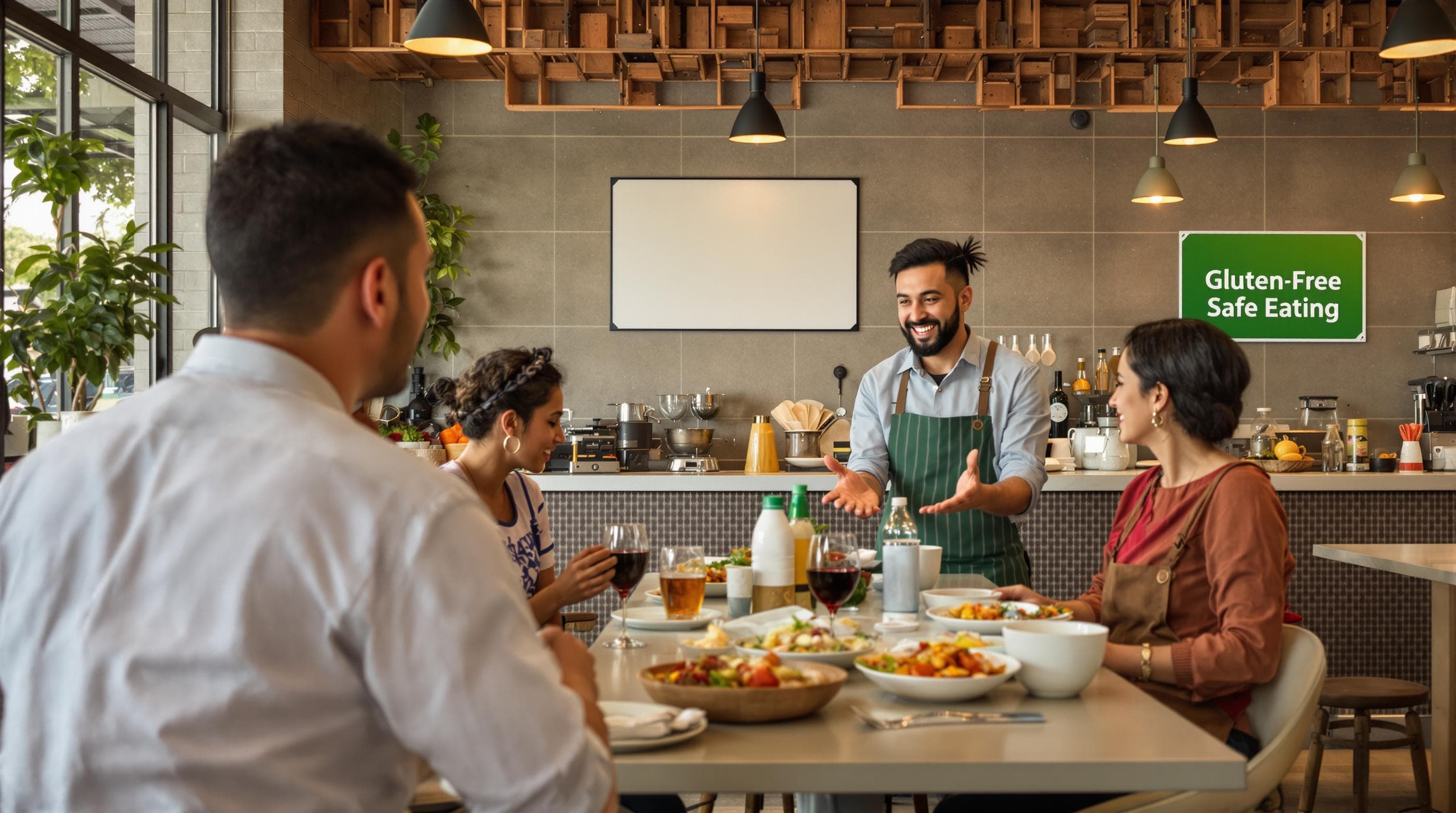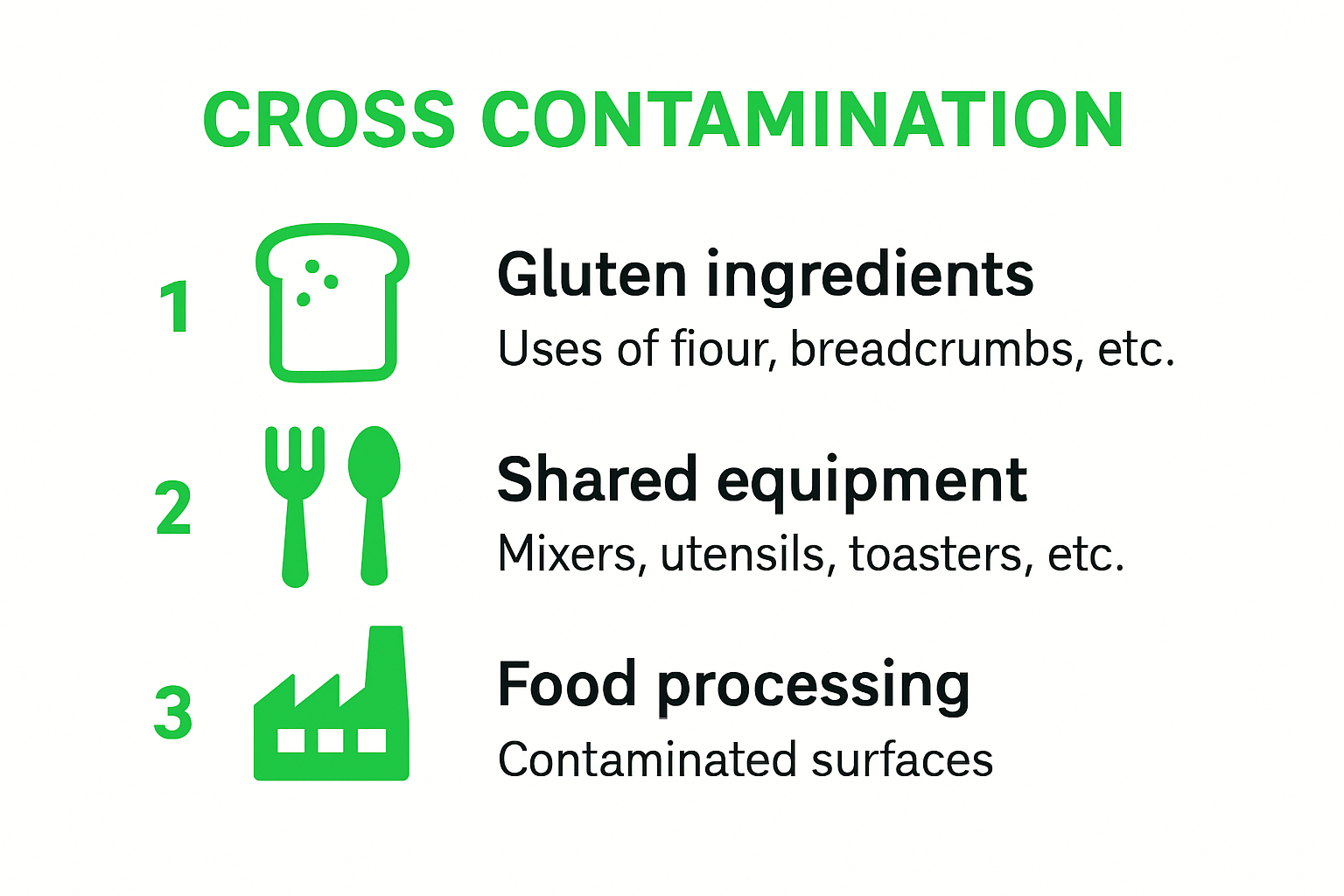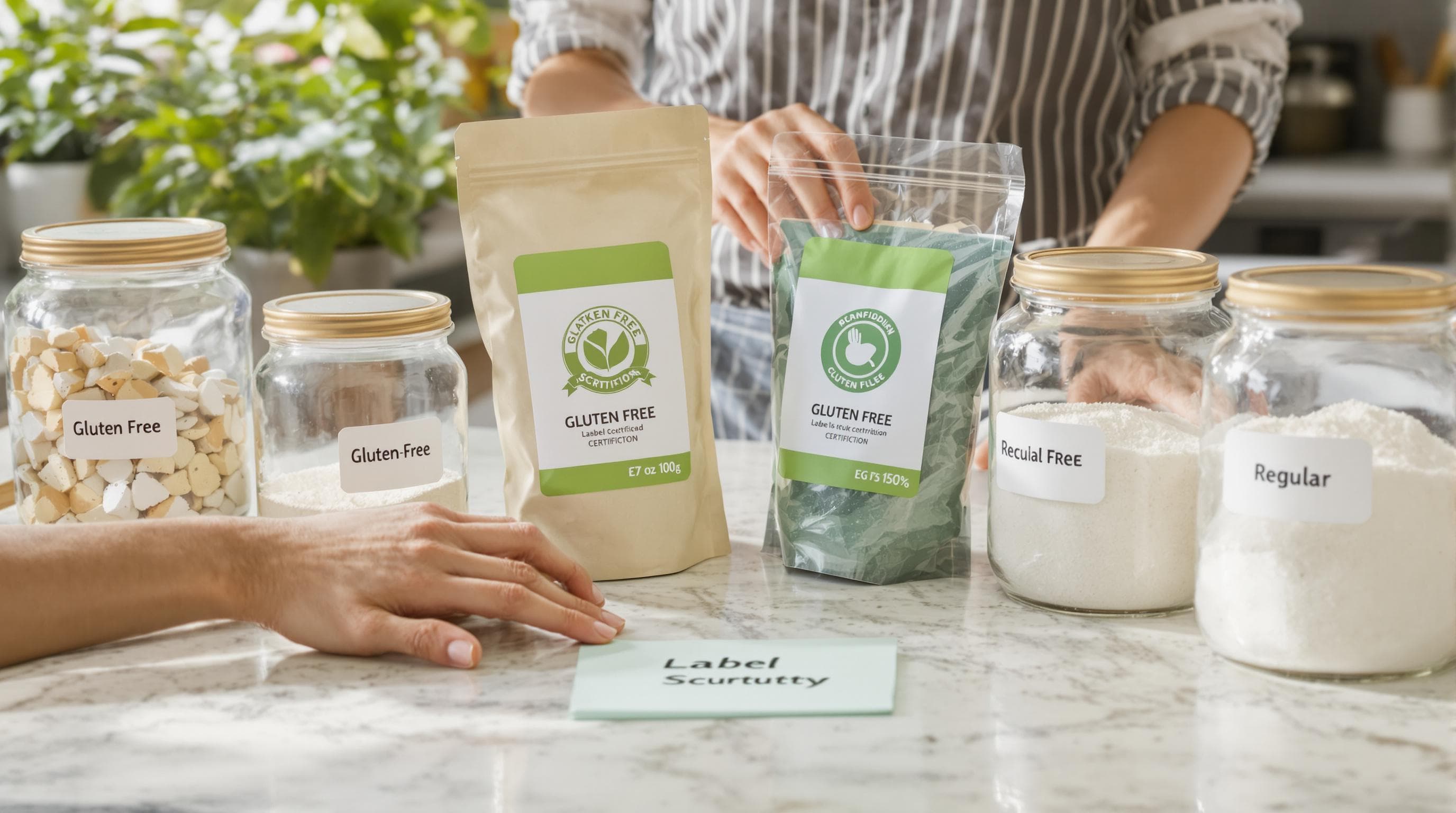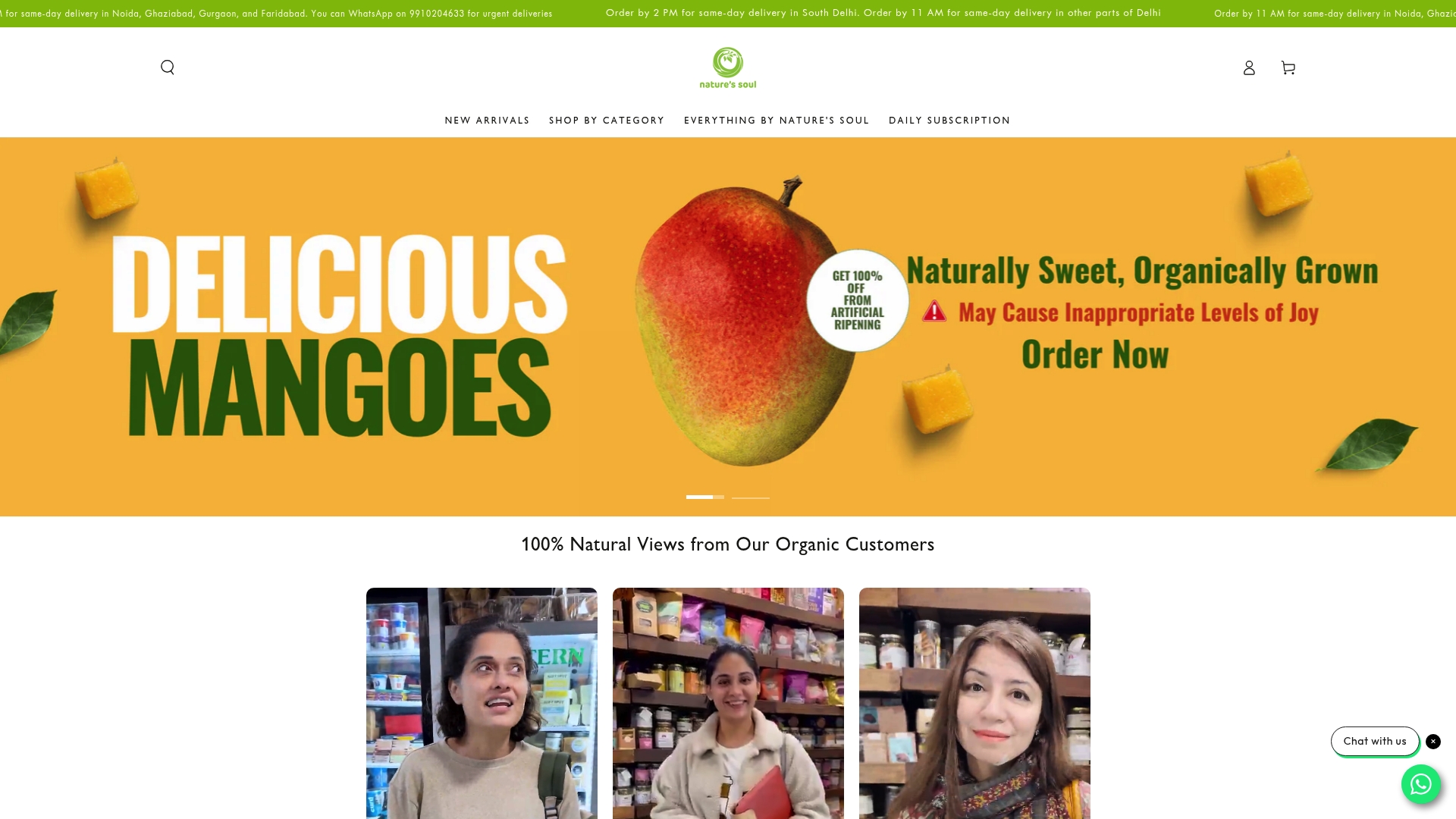
Going gluten free in Delhi NCR is more than skipping the naan or avoiding the samosa. Shockingly, even a single breadcrumb can have over 20 parts per million of gluten, enough to trigger severe reactions in sensitive people. Many restaurants boast gluten free menus but few realise that the real danger comes not from the ingredients themselves but from hidden cross contamination lurking in every kitchen corner.
Table of Contents
- Understanding Cross Contamination In Gluten Free Foods
- Hidden Risks In Delhi Ncr Kitchens And Restaurants
- Smart Shopping And Preparation Tips For Gluten Free Living
- Protecting Families And Travellers: Expert Advice For 2025
Quick Summary
| Takeaway | Explanation |
|---|---|
| Prevent cross contamination with strict protocols | Use dedicated utensils and preparation zones to avoid gluten exposure. |
| Engage with restaurant staff about meal preparation | Ask questions to ensure gluten-free practices are in place to mitigate risks. |
| Educate families on gluten safety practices | Develop clear protocols and label storage to prevent accidental gluten ingestion. |
| Use technology for gluten-free travel | Mobile apps can assist in finding safe dining options and checking ingredients. |
| Understand food label nuances carefully | Learn to identify gluten-containing ingredients and look for certified gluten-free symbols. |
Understanding Cross Contamination in Gluten Free Foods

The Microscopic Threat of Gluten Transfer
Gluten contamination occurs through surprisingly minimal interactions. A single breadcrumb, utensil exposure, or shared cooking surface can introduce enough gluten to trigger adverse reactions in sensitive individuals. The U.S. Food and Drug Administration stipulates that foods containing 20 parts per million (ppm) or more of gluten cannot be labeled gluten free, highlighting the minute quantities that can compromise dietary safety.
Professional kitchens, home cooking spaces, and food processing facilities must implement rigorous protocols to prevent these microscopic transfers. This involves dedicated preparation areas, separate utensils, and comprehensive staff training about cross contamination risks.
Identifying Hidden Contamination Pathways
Understanding cross contamination gluten free challenges requires recognizing multiple potential transmission routes. Common contamination sources include:
- Shared Cooking Equipment: Grills, toasters, and cutting boards can transfer gluten residues
- Processing Facilities: Manufacturing lines that handle both gluten and gluten free products
- Ingredient Storage: Improper segregation of gluten containing and gluten free ingredients
Research from the Celiac Disease Foundation emphasizes that even trace amounts of gluten can provoke immune responses in individuals with celiac disease or gluten sensitivity. This means vigilance is not optional but essential for health preservation.
Prevention and Proactive Management
Effective cross contamination prevention demands a systematic approach. Individuals and food service professionals must adopt comprehensive strategies including dedicated preparation zones, color coded utensils, thorough cleaning protocols, and continuous staff education. Restaurants and home kitchens alike must treat gluten free preparation as a precise, controlled process requiring meticulous attention to detail.
For those with severe gluten sensitivities, consulting with nutritionists and understanding comprehensive food handling techniques becomes paramount. The goal transcends mere ingredient selection – it involves creating an entire ecosystem of safe, reliable nutritional practices that protect vulnerable individuals from unintended gluten exposure.
Here’s a summary table outlining common sources of gluten cross contamination and strategies to prevent them:
| Contamination Source | Risk Description | Prevention Strategy |
|---|---|---|
| Shared Cooking Equipment | Transfers gluten residues between foods | Use dedicated tools, clean thoroughly |
| Processing Facilities | Manufacturing both gluten and gluten free items | Choose certified gluten free products |
| Ingredient Storage | Gluten and gluten free items stored together | Segregate and clearly label containers |
| Eating Out at Restaurants | Surfaces/utensils handled without separation | Ask about kitchen protocols, inform staff |
| Spice Blends & Masalas | Wheat-based thickeners hidden in spices | Verify ingredients or buy certified |
Hidden Risks in Delhi NCR Kitchens and Restaurants
Delhi NCR’s vibrant culinary landscape presents unique challenges for individuals requiring gluten free diets. The region’s diverse food culture, while rich and exciting, harbours numerous hidden risks for those managing gluten sensitivity or celiac disease.
Complex Culinary Dynamics
Restaurant kitchens in Delhi NCR often operate in high pressure environments where speed and efficiency can compromise cross contamination prevention. Research from the International Journal of Environmental Research and Public Health highlights that even establishments claiming gluten free options frequently struggle with unintentional contamination during food preparation.
Traditional Indian cooking techniques, which involve extensive use of shared utensils and cooking surfaces, further complicate gluten free meal preparation. Many restaurants lack dedicated gluten free preparation zones, increasing the risk of microscopic gluten transfer.
Ingredient Sourcing and Kitchen Practices
The complexity of ingredient sourcing in Delhi NCR adds another layer of risk for cross contamination gluten free diners. Local markets and food supply chains often lack stringent segregation protocols. Common challenges include:
- Spice Blending: Many masalas and spice mixes contain wheat based thickeners
- Shared Storage Spaces: Ingredients frequently stored without proper separation
- Equipment Usage: Grinders and mixing tools used across multiple food categories
Food Safety and Standards Authority of India regulations provide general food safety guidelines, but specific gluten free protocols remain inconsistently implemented across restaurants and food establishments.
Consumer Awareness and Restaurant Accountability
Navigating gluten free dining in Delhi NCR requires proactive communication and heightened consumer awareness. Diners must engage directly with restaurant staff, inquiring about ingredient sourcing, preparation methods, and potential cross contamination risks.
Progressive restaurants are increasingly implementing staff training programmes and developing specialized gluten free menus. However, the majority of establishments still lack comprehensive understanding of cross contamination prevention strategies.
Individuals with gluten sensitivities must remain vigilant, asking detailed questions about food preparation, requesting separate cooking utensils, and being prepared to decline meals that cannot guarantee complete gluten free preparation. The responsibility for safe dining experiences increasingly falls on informed consumers who understand the nuanced risks inherent in Delhi NCR’s dynamic culinary environment.
Smart Shopping and Preparation Tips for Gluten Free Living
Navigating the gluten free lifestyle requires strategic shopping and meticulous food preparation techniques. Understanding how to make informed choices can transform the challenges of cross contamination gluten free living into a manageable and empowering experience.
To help readers visualise key aspects of gluten free shopping and kitchen segregation, here’s a table summarising essential strategies discussed in the section:
| Step | Description | Key Action |
|---|---|---|
| Decoding Food Labels | Check ingredients and certification symbols | Scrutinise and verify |
| Kitchen Segregation | Dedicated utensils, cutting boards, storage | Separate and clearly label |
| Cleaning Protocols | Clean surfaces and tools between uses | Thorough sanitisation |
| Trusted Product Sources | Identify reliable stores and online resources | Build supplier network |
| Bulk/Planned Purchases | Buy in larger quantities to reduce risk | Minimise store interactions |
Decoding Food Labels and Packaging
The U.S. Food & Drug Administration provides critical guidance for interpreting food labels and understanding gluten free certification. Consumers must develop a keen eye for identifying potential gluten sources and understanding labeling nuances.
Key strategies for label reading include:
- Ingredient Scrutiny: Check for wheat, barley, rye, and their derivatives
- Certification Symbols: Look for verified gluten free logos
- Allergen Warnings: Examine cross contamination risk statements
Manufacturers are required to follow strict guidelines when labeling products gluten free, with regulations limiting gluten content to less than 20 parts per million.

Kitchen Preparation and Segregation Techniques
Creating a safe gluten free environment demands comprehensive kitchen management. Dedicated preparation zones and specialized equipment can significantly reduce cross contamination risks. Home cooks should implement systematic approaches:
- Separate Cooking Utensils: Designate specific cutting boards, toasters, and cooking tools
- Storage Strategies: Use clear containers and labeling to prevent ingredient mixing
- Cleaning Protocols: Thoroughly clean surfaces and equipment between gluten and gluten free food preparation
The Celiac Disease Foundation recommends comprehensive kitchen reorganization to minimize potential gluten exposure.
Smart Shopping Strategies
Successful gluten free shopping extends beyond label reading. Consumers must develop a holistic approach to ingredient selection and meal planning. This involves understanding potential hidden gluten sources and building a reliable network of trusted food providers.
Essential shopping tips include:
- Local Health Food Stores: Develop relationships with knowledgeable staff
- Online Resources: Utilize gluten free product databases and community recommendations
- Bulk Purchasing: Buy certified gluten free products in larger quantities to reduce shopping frequency
Individuals must remain proactive, continuously educating themselves about new products, emerging gluten free alternatives, and advances in food processing technologies. The gluten free journey is ongoing, requiring consistent learning and adaptation to changing dietary landscapes.
Protecting Families and Travellers: Expert Advice for 2025
As gluten free living becomes increasingly sophisticated, families and travelers face unique challenges in maintaining dietary safety. The landscape of cross contamination prevention continues to evolve, demanding proactive strategies and comprehensive awareness.
Family Protection Strategies
The American Gastroenterological Association emphasizes the critical importance of creating safe home environments for individuals with gluten sensitivities. Families must develop comprehensive protocols that extend beyond individual meal preparation to encompass entire household food management.
Key family protection approaches include:
- Dedicated Kitchen Zones: Establish separate preparation areas for gluten and gluten free foods
- Education Programs: Train all family members about cross contamination risks
- Consistent Labeling: Use color coded containers and clear marking systems
Parents of children with gluten sensitivities must be particularly vigilant, developing communication strategies that empower young family members to make informed dietary choices.
Traveling with Gluten Free Considerations
The Celiac Disease Foundation provides comprehensive guidance for safe travel. A narrative review highlighting the complex challenges of gluten free dining reveals that food service products carry significant contamination risks, with nearly 42% of certified products showing potential gluten exposure.
Travelers can mitigate risks through:
- Advanced Research: Investigate dining options and local gluten free resources
- Portable Testing Kits: Carry gluten detection tools for immediate verification
- Emergency Food Supplies: Pack non perishable gluten free snacks
- Translation Cards: Prepare language specific dietary requirement explanations
Technology and Support Networks
Emerging technologies and support networks are transforming gluten free travel and family management. Mobile applications now offer real time restaurant scanning, ingredient verification, and community driven recommendations. Digital platforms connect individuals with local gluten free experts, creating unprecedented access to specialized advice.
International travel requires additional layers of preparation. Travelers must understand regional food preparation techniques, potential language barriers in communicating dietary restrictions, and variations in gluten free certification standards across different countries.
The future of gluten free living demands continuous learning, technological adaptation, and a proactive approach to personal and family health. By combining strategic planning, educational resources, and community support, individuals can confidently navigate the complexities of cross contamination gluten free living in 2025 and beyond.
Frequently Asked Questions
What is cross contamination in gluten free foods?
Cross contamination in gluten free foods refers to the accidental introduction of gluten into gluten free meals through shared utensils, cooking surfaces, or ingredients. Even trace amounts can trigger adverse reactions in sensitive individuals.
How can I prevent cross contamination when eating out in Delhi NCR?
To prevent cross contamination when dining out, always engage with restaurant staff about their gluten free preparation practices. Ask if they have dedicated cooking areas and utensils for gluten free dishes to ensure your meal is safe.
What should I look for on food labels when shopping for gluten free products?
When shopping for gluten free products, check for ingredients like wheat, barley, and rye. Look for certification symbols that indicate the product is verified gluten free, and always read allergen warnings about potential cross contamination.
What strategies can families use to protect members with gluten sensitivities?
Families can protect members with gluten sensitivities by creating dedicated kitchen zones for gluten free food preparation, educating all family members about cross contamination risks, and consistently labelling gluten free items to avoid accidental ingestion.
Make Cross Contamination Gluten Free a Reality in Your Kitchen Today
Have you ever worried that a single breadcrumb could ruin your efforts to stay gluten free? The article highlighted the invisible but serious risks of cross contamination in both professional and home kitchens across Delhi NCR. It is clear that finding truly safe, clean and certified ingredients is a constant challenge for families and individuals who must avoid gluten for their health. When cross contamination lurks in shared utensils and unlabelled ingredients, you deserve to feel confident about your food choices.

Experience total peace of mind with every meal by choosing organic and natural products from Natures Soul Shop. Our range covers fruit, vegetables, meats, dry grocery staples, vegan selections and a dedicated gluten free offering. Every product is sourced for its purity and is free from hidden contaminants or additives. Visit Natures Soul Shop right now to safeguard your family against cross contamination gluten free risks. Discover the difference that trusted, transparent sourcing can make when you are committed to a safe gluten free lifestyle.
Recommended
- Rose Gold Elixir - Gulnare - 30ml – naturessoulshop
- Chicken Thigh Boneless Corn-Fed (Without Skin, Halal) - Organically Ra – naturessoulshop
- Pasta | Green Pea - Vegan, Gluten Free, No Maida, No Wheat, No Added C – naturessoulshop
- Supporting Local Farmers in Delhi NCR: A Healthy Choice for 2025 – naturessoulshop






